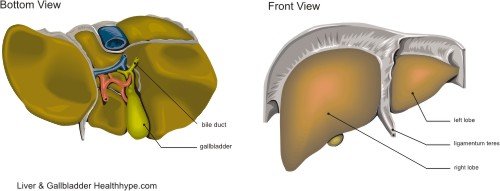Gallstones and Gallbladder Removal and Surgery
Asymptomatic gallstones (silent gallstones) do not need to be treated. In majority of the cases, these gallstones will not cause any symptoms. Gallstone disease (symptomatic gallstones) requires treatment and these days surgical removal of the gallbladder, known as a cholecystectomy, is frequently conducted.
However, if surgical methods are not an option, then medication to dissolve the stones may be considered. Some gallstones can be fragmented by extracorporeal shockwave lithotripsy (ESWL) which is similar to the method used to ‘blast’ kidney stones. However, lithotripsy is not often considered these days for a number of reasons discussed below.
Cholecystectomy
Cholecystectomy is the surgical removal of the gall bladder, which is a pear-shaped organ lying on the upper right side of the abdomen, just below the liver. The gallbladder plays an important role in digestion, by secreting bile into the digestive tract, which emulsifies (‘breaks down’) fats in the food. However, in certain cases, removal of the gallbladder may be necessary and while this does affect digestion of fats, it is not essential to sustaining life.

Indications for Cholecystectomy
A surgical removal of the gallbladder may be considered in certain cases like :
- Cholelithiasis is the formation of a ‘stone’ (gallstone) or calculus in the gall bladder. Surgery would only be considered in a recurrent case of cholelithiasis.
- Cholecystitis is the inflammation of the gall bladder and persistent cholecystitis may be an indication for gallbladder removal.
- Carcinoma of the gall bladder
Before considering removal, your doctor will conduct a range of gallbladder tests. A cholecystectomy is performed under general anesthetic and one of two methods may be used :
Open cholecystectomy
In this method, a 4 to 6 inch incision is made in the right upper portion of the abdomen, just below the ribs. The liver is retracted to allow better access to the gallbladder and the organ is removed. The abdominal layers are closed by sutures.
Laparoscopic cholecystectomy
In this method, a tiny incision is made just below the umbilicus, through which the laparoscope is inserted into the abdomen. The laparoscope is a thin, flexible scope with a camera at the end, which projects a magnified image of the area to be operated, onto a monitor. A surgeon skillfully guides the scope to the site and three tiny incisions are made at the upper right side of the abdomen to insert the minute surgical instruments necessary for the procedure.
If available, a laparoscopic gallbladder removal surgery is usually the procedure of choice, due to the lower risk of complications, quicker procedure with faster healing time and less scarring.
Cholecystotomy
A cholecystectomy may be preceded by a cholecystotomy which is the drainage of the gallbladder in the case of an empyema. This allows for the pus to be drained out of the gallbladder and for the infection to settle before a cholecystectomy is conducted.
Bile Duct Stone Removal
Although the gallbladder is removed, the bile ducts remain so that bile from the liver can empty straight into the duodenum. If there is a stone in the common bile duct, an ERCP with sphincterotomy is often necessary and may not require a cholecystectomy. However, a cholecystectomy is usually considered as there is a significant degree of recurrence within 5 years if the gallbladder is not removed.
The discovery of stones in the bile duct, during or prior to a cholecystectomy may prompt intraoperative extraction. If ERCP and laprascopy surgical options are unavailable, then an open common bile duct exploration may be considered. This is known as a choledocholithotomy and may also be considered if there is a large stone in the common bile duct.
Lithotripsy
Lithotripsy is the fragmentation of a gallstone, within the gallbladder or bile duct, by the use of sound shock waves. This procedure is similar to a kidney stone ESWL where the sound energy is applied from the exterior although an endoscopic lithotripsy is possible but rarely ever done for gallstones. It is usually considered for a single large stone but most symptoms of gallstones and complications arise from small stones.
The stone fragments will still have to be removed (surgically or with dissolution medication) after lithotripsy and a cholecystectomy is still advisable so lithotripsy is not usually considered. The procedure is expensive and the facilities for this procedure may not always be available. No comparitive clinical trials favor a lithotripsy over other removal methods. However a lithotripsy with dissolution therapy may be considered if other procedures are contraindicated.
Gallstone Medication
Drugs such chenodeoxycholic acid (chenodiol) or ursodeoxycholic acid (ursodiol) are oral bile acids that reduce cholesterol saturation. This type of medication has a low rate of dissolution and are most effective for small cholesterol stones. However, treatment with these drugs may need to be continued for prolonged periods of time and there is always the risk that the shrinking stones may result in complications.





